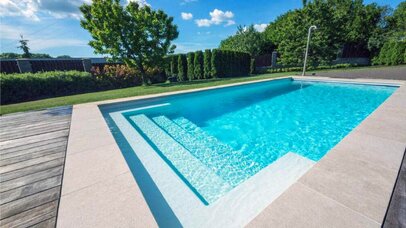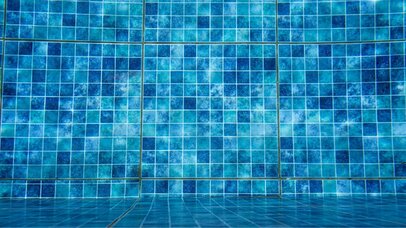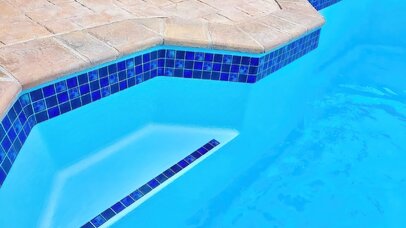A lot of people get confused by the idea of a fibreglass pool. For many, it looks just like a giant bathtub, while it’s very different from that in reality.
A fibreglass pool isn’t like any other inground swimming pool, so there will be some confusion. There are many advertisements for fibreglass pools, and you might even have encountered many of them.
Ads for fibreglass pool shells are typical along roadsides and even on the back of trucks. The makings of a fibreglass pool are far more complex than anyone can imagine.
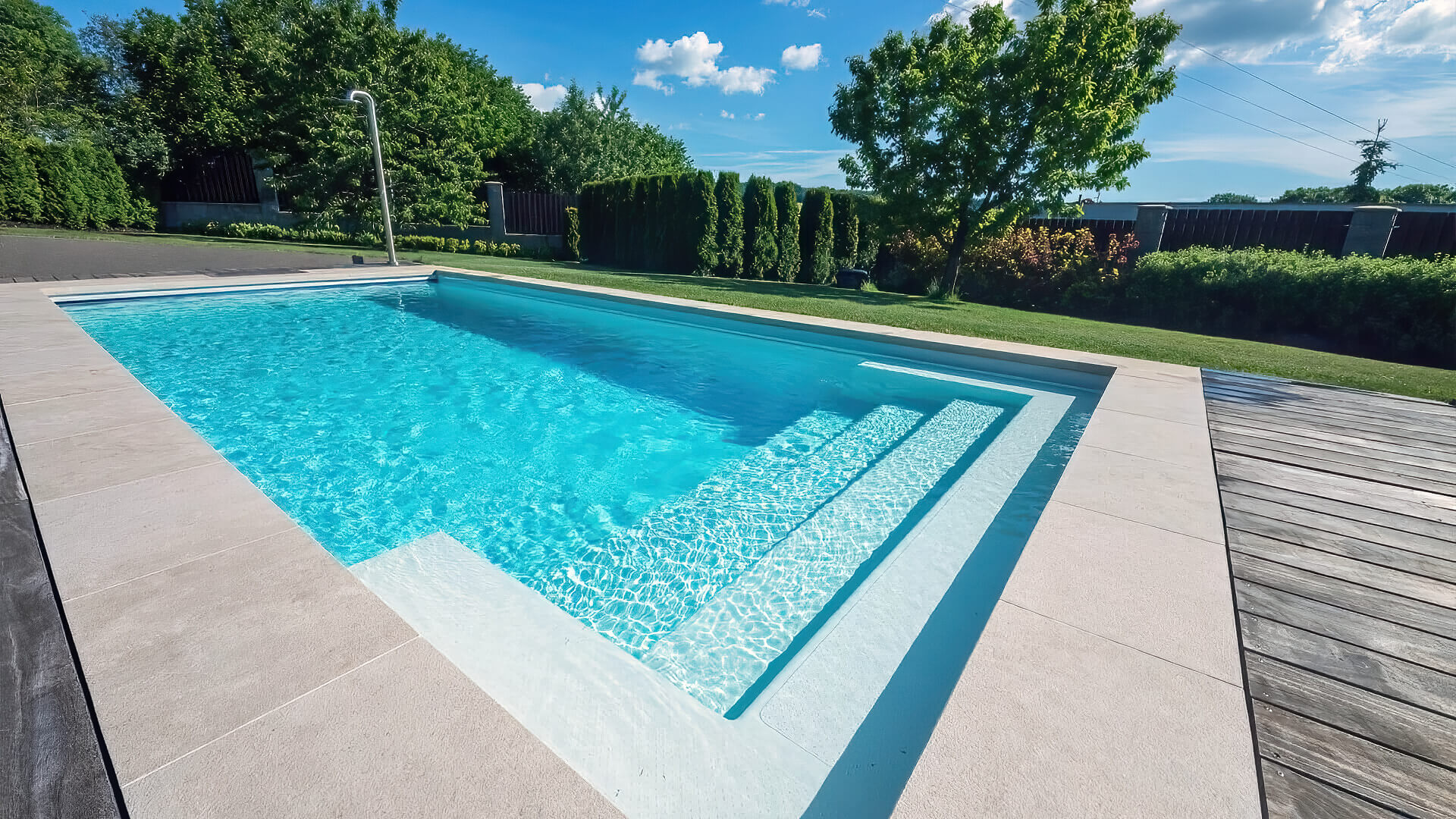
But before deciding what pool water you need or what equipment to install, it is essential to know how fibreglass pools are made. So, read on!
Definition Of Fibreglass Swimming Pool
Before making a fibreglass pool, let us understand what it is. A fibreglass pool refers to a one-piece pool that has been made in a different facility. In the beginning stages, these pools are created from plugs or patterns. From that stage, it then gets transformed into a master mould. It is from this mould that other pools are made.
In other words, fibreglass pools are single-piece swimming pools. These pools are prebuilt from the mould we just mentioned. After that, they get shipped to a different location. While the name implies that these pools are fibreglass, that isn’t always true. They are made of several layers, each adding strength and support to the last.
The layers come together, forming a rigid and flexible fibreglass pool shell that becomes the pool. Depending on your choice, these pools have several shapes: rectangles, circles, or even amoebic. There are also pools with a combination of different shapes and inbuilt seats and steps.
Benefits Of Using Fibreglass Swimming Pools
There are several advantages of using fibreglass pools. We’ll take a look at a few of them now.
1. Low Maintenance
One of the most significant advantages of using fibreglass pools is that they do not take too much effort to clean or maintain. This is because fibreglass pools have a waterproof gel coating on their surface. This coating creates a layer that makes it extremely hard to absorb chemicals.
2. Durable And Damage-Resistant
Concrete pools are nice to look at and come in different shapes but are vulnerable to cracks. The plaster of concrete pools can crack over time due to constant chemical exposure and age.
That is not something to worry about when it comes to fibreglass pools. These pools come with six different layers, which makes them quite durable. Also, they are flexible enough to make them immune to significant wear and tear.
3. Safer On All Counts
Fibreglass pools are more expensive than other pools, ending with the initial cost you pay. Due to their low maintenance and damage resistance, they are far easier to own. There isn’t a need to replaster anything or worry about vinyl with a fibreglass pool. Lastly, these pools aren’t exposed to too many chemicals, making them safer.
4. Good Warranty
So far, you’ve learnt that fibreglass pools are chemical-free and more durable. This also means that they are the least risky kind of pool. That’s not all; they usually have an excellent warranty backing them.
Making Fibreglass Pools
We’ve learnt what fibreglass pools are and why they make a good option. Now, it’s time to understand how they can be made. This section will take you through the process right from the first step.
1. Building Plug/Pattern
The first step in building a fibreglass pool is creating the plug. It is also called a pattern, which refers to the structure that will become the pool later. This can be made of any different material. Plugs and patterns can be wood, steel, fibreglass, body filler or primer.
2. Making The Mould
Once the plug or pattern is ready, the next step is to build the mould, also called the shell. Once a fibreglass pool manufacturer ensures the plug and mould are separated, it’s time for the next step.
This is to mass-produce the swimming pool shape, anything from a singular shape to a combination of seating areas and steps. The moulds will have to be cleared of any dirt.
3. Getting The Gel Coat Ready
One thing to understand about these pools is that they are made in reverse order. The coating gel refers to the colours that are chosen for the pool. This coat is manufactured from a coloured resin. After selecting one with a spraying device, you can apply it to the mouce.
Remember that the coat has layers of three forms to ensure the finish has enough strength. The coat needs three layers because if the gel is applied thinly, there could be some blistering to the pool’s finish. Also, it shouldn’t be spread thickly because that could lead to cracks being formed.
4. Coat Made Of Vinyl
The next step is spraying the vinyl ester resin coating on the pool. Since the gel coat is partially porous, there is a chance that water will pass through the coating’s first layer. A reaction will most likely occur if the area under the gel coat polyester is blistered or decayed.
This is one of the main reasons a vinyl ester resin layer is a good idea; installing this layer helps prevent such problems.
5. First Coat Of Chopped Fibreglass
Chopped fibreglass is nothing but a form of multiple materials that get applied with the help of a fibreglass chopper. This includes resin catalysts along with chopped fibreglass. The blend of these three ingredients helps add more strength and longevity to the pool.
Once the first layer of chopped fibreglass is added, it is rolled to ensure that air doesn’t get trapped. This layer needs to be cured before the next step.
6. Second Coat Of Chopped Fibreglass
After the chopped fibreglass is added for the first time, you must prepare for the next step. This is the second layer of chopped fibreglass coating. A double layer of chopped fibreglass coating adds more strength and stability to the pool.
Adding this guarantees further endurance to the pool, so it is always recommended to add this second coating. After the second coating has been added, it is rolled to prevent air from being trapped and cured.
7. Roving Fibreglass Layer
Once the chopped fibreglass coat is done, the next step is a layer of woven roving fibreglass. There are a few manufacturers who prefer to add more chopped fibreglass. Whichever type you add, it is highly recommended to be as thick as you like.
Special care is given in a few areas, like the corners and the point where the pool’s wall and floor meet. When a thin layer of chopped fibreglass is added to this region, faint spots develop, leading to slight damage to the gel coat in the long run. To prevent such imbalance, a layer of woven roving can be used.
Coats of chopped fibreglass that are too heavy can also create issues in the long run. So, rather than worrying about this imbalance, a coating of woven fibreglass does wonders for the pool’s durability and quality.
8. Third Coat Of Chopped Fibreglass
As mentioned earlier, there is a chance that the third coat of chopped fibreglass could create an imbalance by being too thick or too thin. If you are confident about its coating structure, use another fibreglass coating. Adding this can help as much as woven roving fibreglass layers. Roll it to prevent air from getting trapped and then cure it.
9. Layer Of Honeycomb Core
Once the layers of chopped fibreglass and woven roving fibreglass are done, the next step is to add thin layers of the honeycomb core. This layer is placed along the walls. The honeycomb core is also referred to as “ribs.”
They are added to keep the fibreglass pool’s structure and strength intact. This step is necessary to ensure that the fibreglass is flexible and can withstand water pressure.
10. Fourth Coat Of Chopped Fibreglass
Once the honeycomb core has been added, the next step is to add another chopped fibreglass coat. Adding the fourth layer of chopped fibreglass is necessary to ensure further strength and durability to the pool. Once the coat is applied, rolling helps prevent air bubbles from popping up.
11. Fifth Coat Of Chopped Fibreglass
The fifth coat of chopped fibreglass is the last step in making a fibreglass pool shell tool. The final layer of fibreglass coating adds further integrity to all the other layers of the pool’s shell. It is rolled to prevent air from getting trapped and is then cured.
An Intricate Process
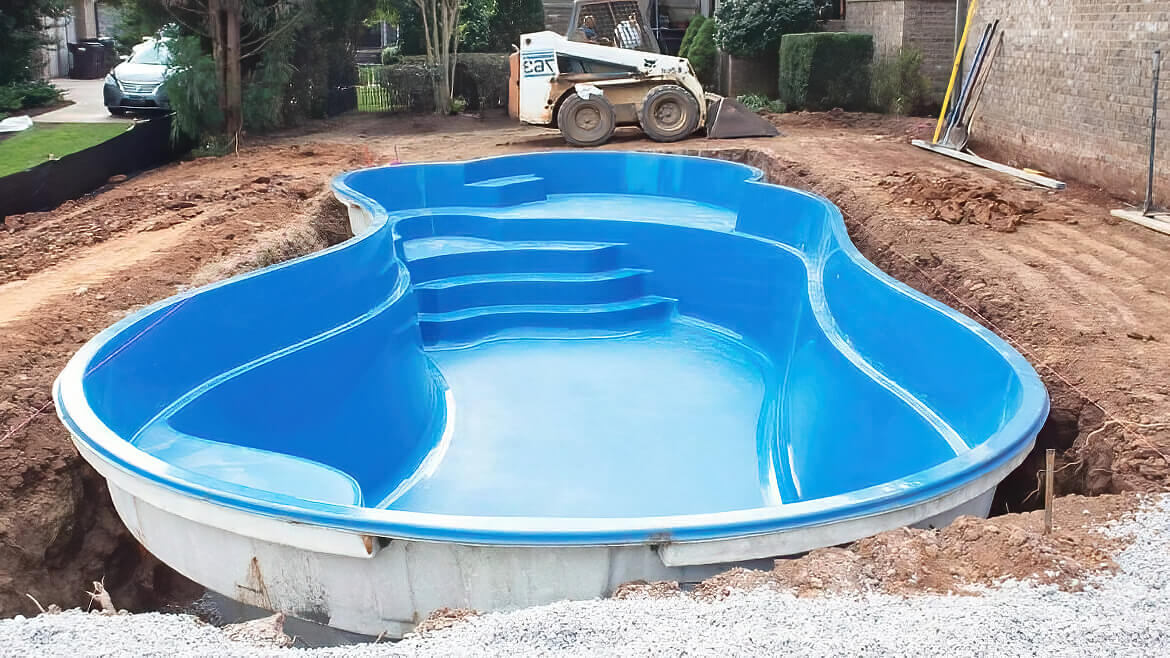
Once the eleven steps to making your fibreglass pool are complete, the swimming pool will be delivered to the backyard. A hole would already have been dug to accommodate the pool. It will then be installed in this space.
We’re sure plenty of people who thought making a fibreglass pool was simple will have a better idea of the intricate process that goes into it. As we mentioned earlier, this is quite a complex process. If you are considering the benefits of buying a fibreglass pool, follow these eleven steps.
Fibreglass Pool Constructions
Whether buying a pool made of fibreglass, commissioning a concrete pool or any other kind, the point is to understand how they are made and clear the queries you might have. As mentioned earlier, though a fibreglass pool has a lot of work behind it, it is less expensive in the long run and saves you quite a lot of energy.
Also, it is pretty durable because of the extra layers of protection that keep it sturdy. In addition to this, the pool is free from harsh chemicals that can be a problem in the long run. And you can look at different heating options to enjoy your fibreglass pool even in winter. Once you understand how fibreglass pool shells are made, you know why they are durable and have so much strength.
Looking for a fibreglass pool builder in Sydney? From designing the perfect pool design to installing fibreglass shells, our expert pool builders can help you. Please speak to our team to get your construction process started today!
Take care and see you soon!

